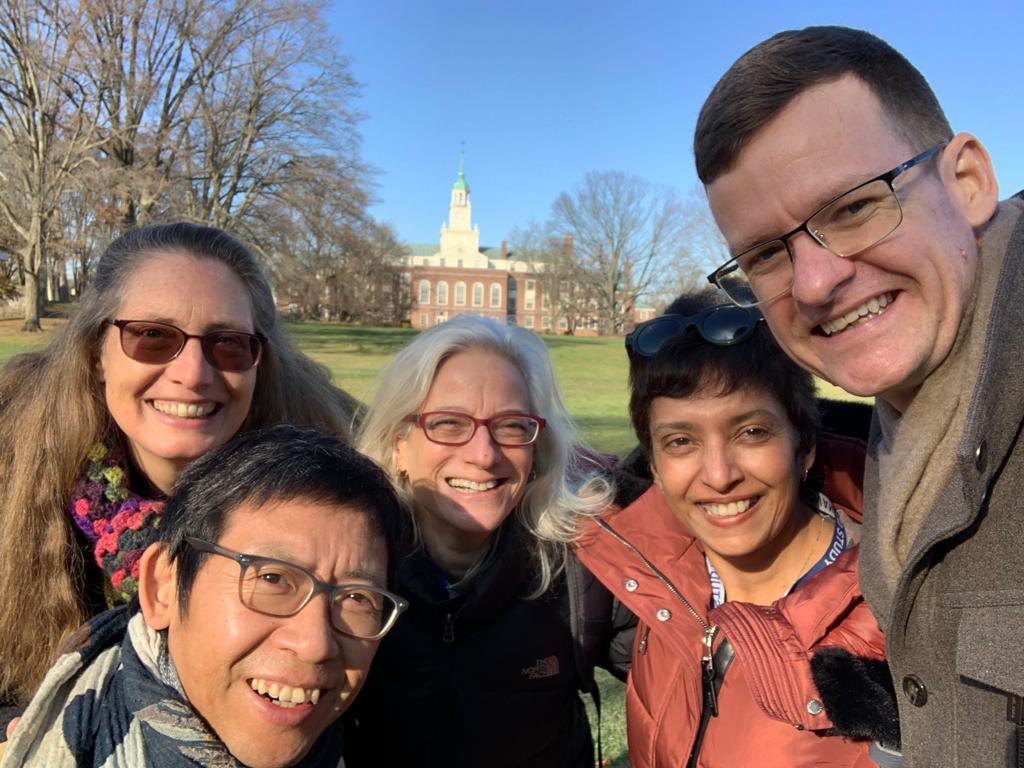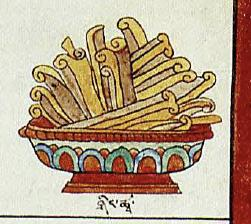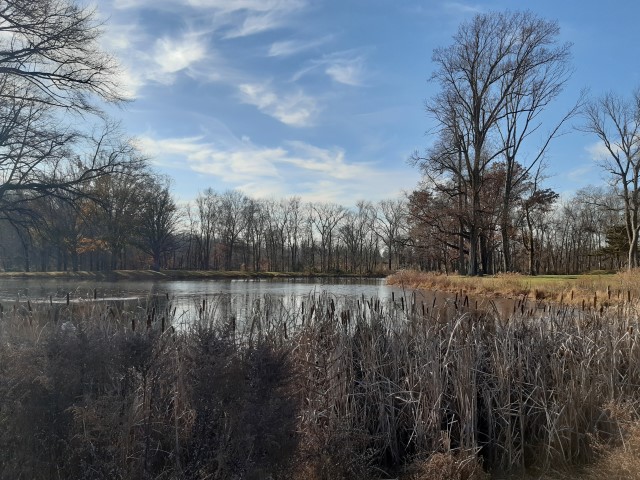A two-day workshop at the Institute for Advanced Study (IAS), Princeton University, NJ
November 30 – December 1, 2023
Participants:
Yan Liu, Associate professor in the Department of History at the State University of New York, Buffalo, IAS fellow
Ronit Yoeli-Tlalim, Professor of History at Goldsmiths, University of London, IAS fellow
Nira Wickramasinghe, Professor of Modern South Asian Studies at the Leiden University Institute for Area Studies, IAS fellow
William McGrath, Robert H. N. Ho Family Foundation Assistant Professor of Buddhist Studies, Department of Religious Studies, New York University, postdoc on the FWF project “Pandemic Narratives of Tibet and the Himalayas” at the University of Vienna
Barbara Gerke, University of Vienna, PI of the FWF project “Pandemic Narratives of Tibet and the Himalayas” at the University of Vienna

Research and writing are often a solitary affair, even more so if one works on obscure topics. To get the opportunity to talk to scholars in the same field is precious. To find three scholars interested in aromatics in one place (the Institute for Advanced Study at Princeton University) is even more precious. It offers a great opportunity to get together. We designed this multidisciplinary workshop to spend time to talk shop: research projects, detailed questions on smelly substances, and our concerns regarding texts, methodology, and writing. The objective was to sit together and talk across our disciplinary divides of history, anthropology, and religious studies, finding common ground, and inspire each other in writing about aromatics through sharing our sources and thoughts on potent substances and how they have been used for epidemic prevention and treatment. Here are some of my reflections on the workshop:
We find ourselves on Einstein Drive at the outskirts of the Princeton campus on a cold but sunny wintery day. Bill and I travelled from New York and Boston; Ronit, Yan, and Nira have been busy with their fellowship projects here at the IAS. It is the first time we all get together in person. Together we want to think through the significance of aromatic substances in Asian medicines, specifically in an epidemic context.
After an extensive round of introducing our projects to each other and a marvelous lunch at the IAS, I begin by sharing my research on the multiple potencies of nine aromatic substances which are used in the formula of the Tibetan 9-Compound Black Pill, called Nakpo Gujor (nag po dgu sbyor). The formula has a long history in Tibetan medicine (Sowa Rigpa) and came to the forefront during the COVID-19 pandemic. I trace some of the trans-Eurasian trade of these substances, some of which were also used as dyes and in paper making, apart from medicine. We discuss how aromatics in general are more about a strong smell than a good smell. Who determines what “stinks” and what is “fragrant”? What might the smellscapes of thirteenth century Tibet have been like? How can we understand their textual and transnational representations in formula texts? We bounce back between Tibetan and Chinese ideas of potency: what is the importance of “black” and of poisonous substances in anti-epidemic formulas? How important were myrobalan, musk, cinnamon, calamus, aconite, sulfur, asafetida, bezoar, frankincense, and myrrh in anti-epidemic formulas?
Bill introduces a chapter of his forthcoming monograph on Plague in Tibet, outlining the protective pandemic activities and earlier versions of the 9-Black Compound Pill of the 13th century Tibetan text Vase of Ambrosia. He shares with us his textual research on the Tibetan ways of writing about fevers and contagion. It is not all about balance, but also about displacement and invasion. We talk about the military language of disease, buboes, plague, and the protective associations of aromatic substances. We talk about the contested issue of retrospective diagnosis of disease and how easy it is to read smallpox into the past and how things have changed in the light of recent scientific research uncovering a major plague outbreak in Central Asia during the 13th century. In this context, Bill explains how he used to translate the Tibetan term ’brum as “pox,” but now he thinks maybe it is just a “pustule,” or it might even refer to a plague pustule rather than to smallpox. Spirits and demons (gnyan) have been important agents of infectious disease across China and Tibet, and Bill discusses in which context they are personalized or impersonalized. Yan responds by opening a discussion on the ontological and physiological aspects of disease etiology, going back to Paul Unschuld’s work of the 1980s, raising questions on how we could connect those in our discussions on epidemics.
A scholar of Chinese history and the history of medicine, Yan is currently working on a book about the transcultural history of aromatics and the production of olfactory knowledge in China (7th to 13th century). Previously, we were in touch only via zoom, attending poison panels and launching our books on poison together (Yan’s Healing with Poisons and my Taming the Poisonous, both published in 2021). Poisons led us both into research of contagion, aromatics, and epidemics. It is great to finally talk in person. Yan shares his historical research on early Chinese medical texts and the use of aromatics for epidemic prevention. He mentions the use of aromatics emerging in TCM formulas during the COVID-19 pandemic and uncovers their past: patchouli, the Pill of Storax, frankincense, agarwood, and camphor, all of them having long histories in Song China (960-1279).
The trade networks were impressive: Patchouli came from northern Vietnam and was used to combat epidemics; camphor came from Borneo and was considered very cooling and good to treat fever. We also discuss how “epidemics” were called in the past and how cross-cultural negotiations are revealed in the names used for aromatic substances. We go back and forth in time, discussing the contemporary harvesting of musk, giwam (bear’s bile), and bezoars (discussed in Mao’s Bestiary: Medicinal Animals and Modern China, 2021). Yan then tells us about the year 1116, in which a government-sponsored materia medica collection listed 1,800 drugs, many of which were aromatics, were traded from foreign countries, and were used to protect from epidemics. We also note that while the state was involved in prescribing (largely foreign) aromatic medicines to combat epidemics, most of that effort was aimed at the elite with negligible access to the larger population.
With Nira we dive into the multifaced sensory histories of one aromatic substance: cinnamon. She introduces her book proposal on the world history of cinnamon, which leads to a discussion on the trade, politics, and changing commodification of cinnamon over time. She shares some of her methods and ideas of how she will create the story of the book, which is telling a narrative of cinnamon through its unique environments. Her narrative begins in Sri Lanka and weaves together stories of trade and the working conditions of the cinnamon bark cutters, the changing consumption patterns across oceans, developments from cinnamon as an ingredient of Christmas pies towards, more recently, becoming an “ethical spice” substituting sugar.
Cinnamon becomes our example to discuss story-telling narratives of aromatics. We touch on Ronit’s work Islam and Tibet: Interactions along the Musk Routes (2011), Pippa Lacey’s The Coral Network (2016), and Amitav Gosh’s The Nutmeg’s Curse (2021). We search our laptops for Tibetan and Chinese sources on the use of cinnamon, and Bill comes up with imageries in the 17th century medical thangka book Tibetan Medical Paintings (1992), and the Tibetan History Reader (2013) which mentions that the 5th Dalai Lama was embalmed in cinnamon. Some of the older sources on potent substances that are so relevant for all of us working on aromatics in Asia also list cinnamon: Schafer’s The Golden Peaches of Samarkand and Berthold Laufer’s Sino-Iranica materia medica work of 1919, which we still find is a very valuable source.

(Parfionovitch et al. 1992: vol. 1, plate 33, p. 82)
Ronit reads a quote for us from the book by William Rubruck (The Mission of Friar William of Rubruck. His journey to the court of the Great Khan Möngke, 1253 – 1255) who traveled to Mongolia before Marco Polo and in 1253 leaves us a clear description of their quarantine response during an epidemic. Ronit is an attentive listener and gives valuable feed-back to everyone and shares her insights on trading fragrant musk and myrobalan across Eurasia from her book ReOrienting Histories of Medicine: Encounters along the Silk Roads (2021). She also raises pointed questions on how to unpack the trade of aromatics. Were doctors demanding certain substances? What triggered their demand and supply? So many good questions to guide our research.
The Institute for Advanced Study at Princeton provided the perfect surroundings for our discussions with excellent working spaces, lunches, cookies, coffee, and nature walks. We return to our desks inspired and with fresh ideas to put aromas into words.

One reply on “Aromatics and Epidemics”
[…] Aromatics and Epidemics Tagsanthropology, aromatics, history, pandemic, plague, potent substances […]